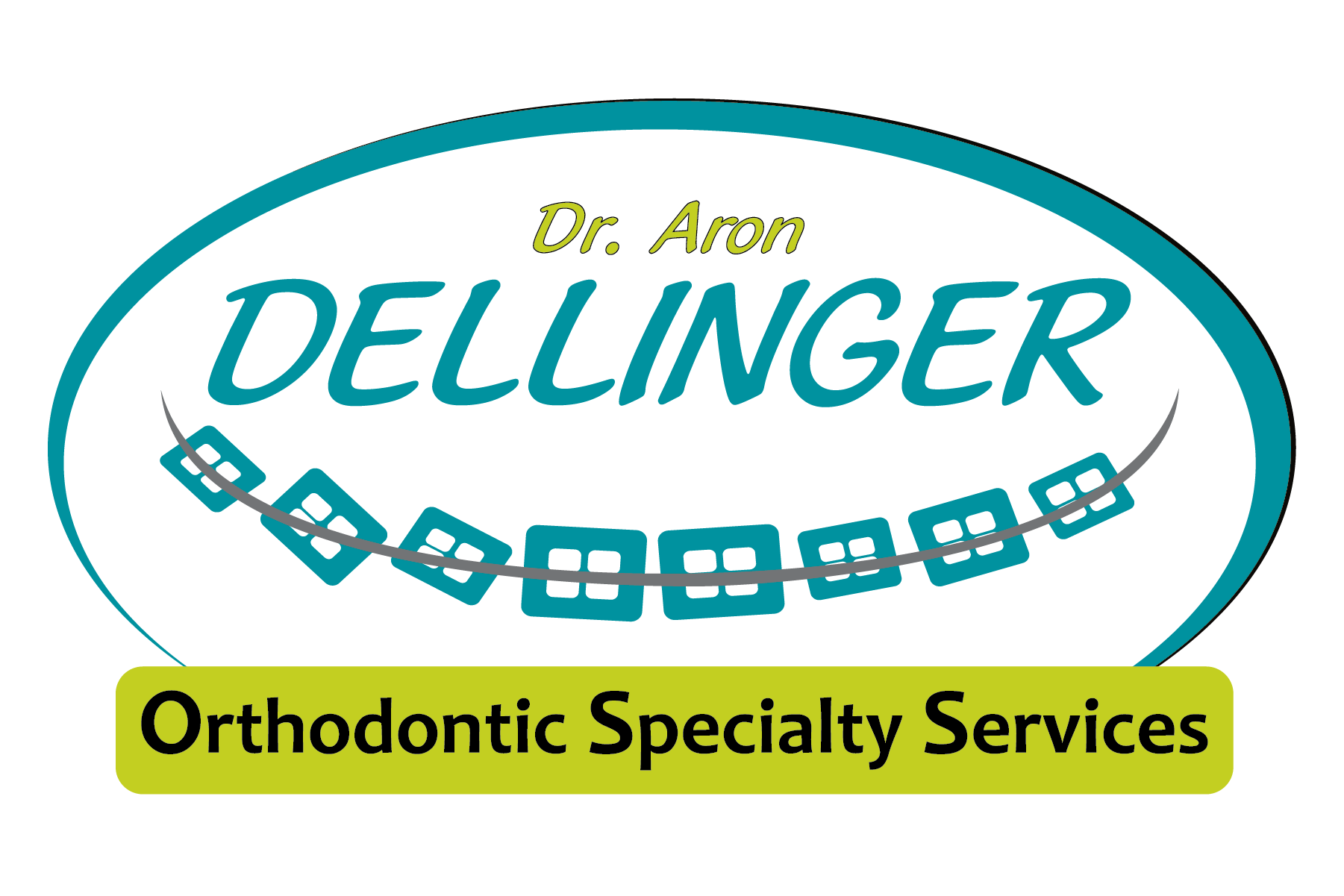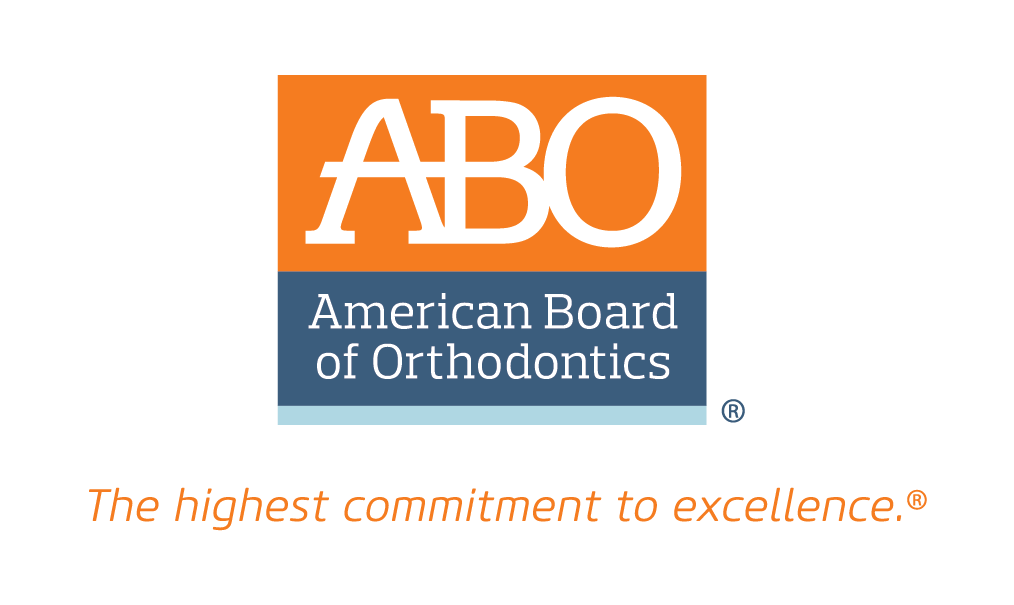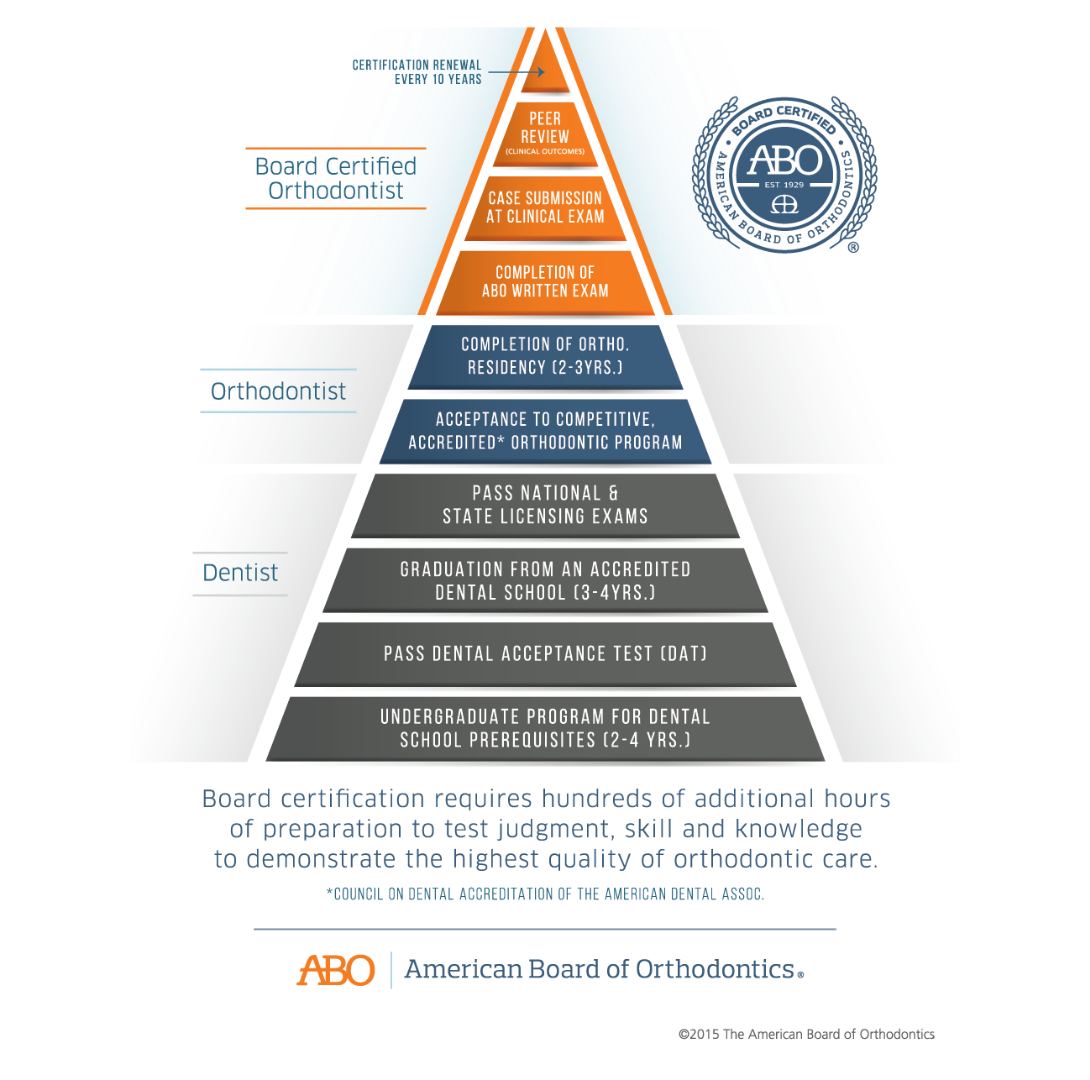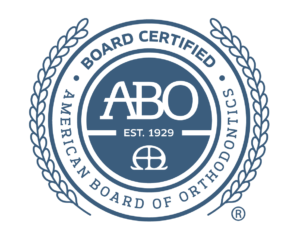The American Board of Orthodontics (ABO) was established in 1929 and is the oldest specialty board in dentistry. The ABO is the only certifying board in the specialty that is recognized by the American Dental Association (ADA). The board’s purpose is to elevate the quality of orthodontic care for the public by promoting excellence through certification, education and professional collaboration. Not all orthodontists are board certified. All orthodontists must be licensed to practice, however board certification is a voluntary achievement that all orthodontists do not choose to pursue.
In December 1998, I completed my orthodontic residency at Saint Louis University (Masters in Specialized Dentistry-Orthodontics). I started work at OSS immediately after completing my comprehensive exams and defending my thesis. I took those exams in Saint Louis, packed up my stuff, drove back to Fort Wayne and started work with my father, brother, and uncle in private practice at OSS the very next workday. At that time very few orthodontists in the state of Indiana were ABO certified (in Northern Indiana maybe only four). The ABO certification process has proven to be incredibly valuable to me by changing the way I look at case results.
How to become ABO certified…
The ABO exam is a three-part exam. The first part is a written exam, similar to the SAT, but it only focuses on orthodontic related science. The second part is the board case records exam, which is a face to face oral examination involving clinical case records. Its purpose is to test the candidate’s ability to diagnose and identify various orthodontic problems, and his or her knowledge of possible treatment options for correcting those problems. The third part of the exam is the clinical exam. This exam involves presenting cases treated by the candidate with extensive measurement and documentation of the pre and post-treatment results. Most orthodontists who complete the ABO process spend about 10 years in private practice accumulating case records and developing skills prior to taking the clinical exam (part three).
I began the ABO certification process as a resident by passing the written portion of the exam. After completing my Master’s Degree, I started to collect case records in preparation for the clinical portion of the ABO exam. I was tracking the progress of specific cases that would qualify for the various categories that the ABO required candidates to present. About a year and a half later some of those cases were coming to completion and I began the arduous task of measuring models, tracing and measuring x-rays and scoring the cases to see how well they finished. I felt confident that all of the cases I finished were excellent examples of skilled orthodontic treatment, and that they would score very well….I was wrong!
The cases displayed wonderful before and after results. They looked great and the teeth fit well in the bite. X-rays and photos indicated that all of the major aspects of health function and aesthetics were super. BUT when I started measuring, looking at smaller discrepancies, adding up all of the minor imperfections, and critically assessing more detailed aspects of the finished result, many of the cases I was most proud of did not “measure up” to the ABO standard of excellence. What I discovered was that only about twenty percent of the cases that I hoped would serve as ABO cases for a specific category were really the type of case that the ABO would find excellent.
During the process of measuring every detail of many, many cases I started to identify patterns of imperfection. I found areas in treatment results that consistently were NOT finishing as well as they could. Without spending countless hours literally “measuring imperfection” and critically reviewing my own case results, I never would have discovered there were imperfections that I could eventually PREDICT AND CORRECT BEFORE a case was even treated! I discovered that in certain patients the braces would produce rotations or tipping of the roots in x-rays. I learned to take progress records during treatment and also learned precisely where to look for discrepancies, identifying them earlier in treatment, improving both treatment time and results.
You may be asking what is required to maintain ABO certification?
Re-certification of ABO status is a relatively recent development and the requirements for re-certification are constantly changing. When I took the written exam it was explained to us that we would be the first class of orthodontists taking the ABO exam that would be subject to continual re-certification. In 1996 it was announced that all candidates taking the written exam would be required to re-certify every 10 years. Prior to this re-certification was not required for orthodontists who took the written exam.
I completed the board certification process in 2005, and I found the entire process of studying, gathering case records, measuring results, and receiving critical feedback from the examiners to be one of the most valuable learning experiences of my whole career.





